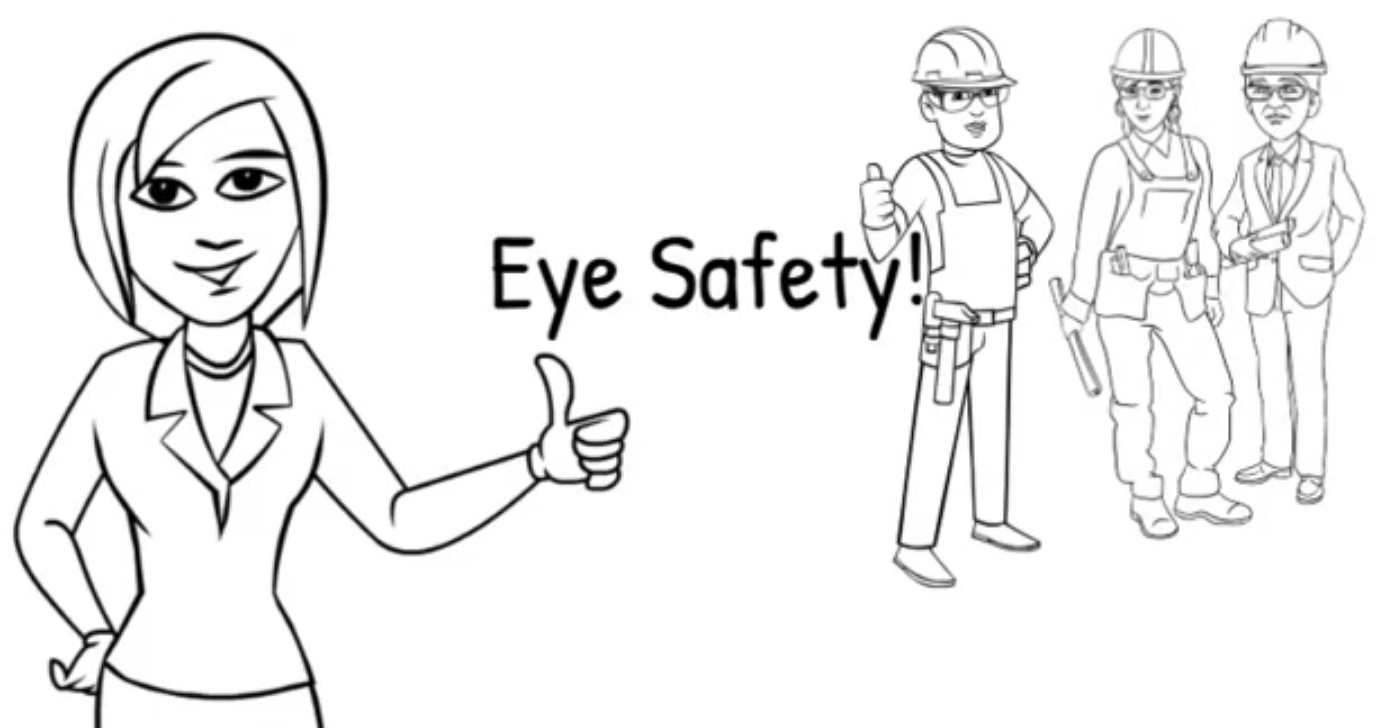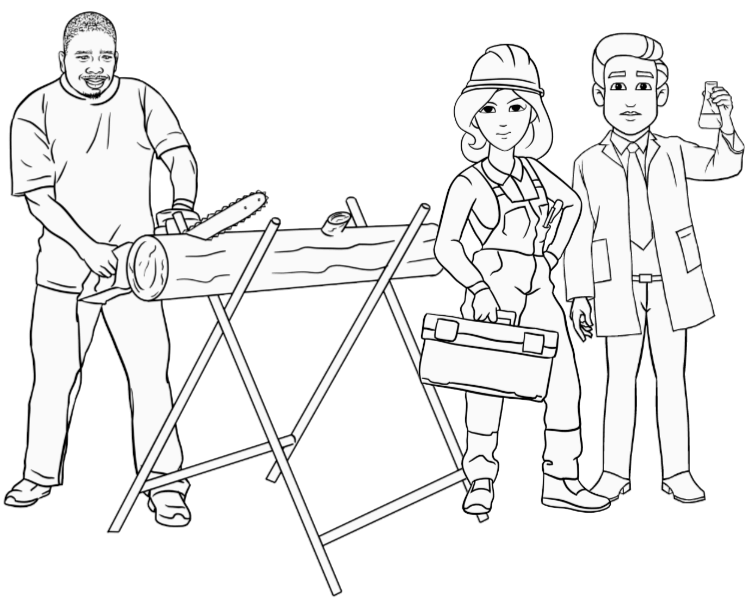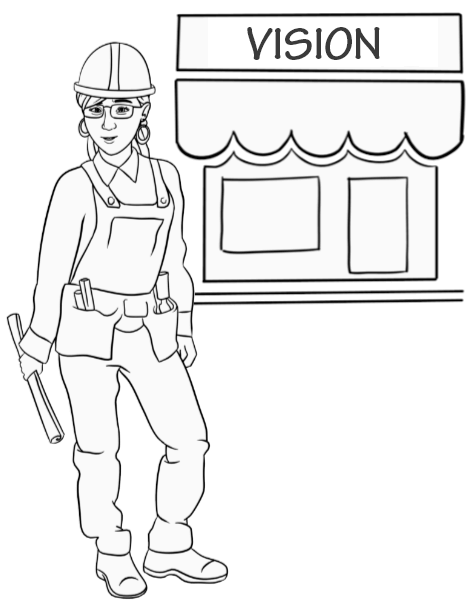Considerations for Safety Glasses - Lenses
Employee Eye Protection Is Important
|
Eye injuries can occur anywhere, including in the workplace, at home, in the yard and during sports activities. Did you know that everyday more than 2,000 workers experience an eye injury? And 10-20% of those injuries result in temporary or permanent vision loss, according to the Center for Disease Control and Prevention (CDC). We only have one set of eyes and should do everything to ensure they are protected in every environment.
According to OSHA and eye experts 90% of eye injuries are preventable. It is important for your employees to have and wear the correct eye protection, including safety glasses, prescription safety glasses and over-the-glasses safety goggles. There are several things to consider when determining the best safety vision glasses:
|
Common Workplace Eye Hazards
|
It is important to ensure you are providing and wearing ANSI and OHSA approved prescription safety glasses to protect against the many potential eye hazards that exist in your workplace. Dust, flying objects, and chemicals are just a few of the most common eye hazards.
1. Dust Dust is the most common eye hazard your workers will encounter. People working in construction, mining, oil and gas, woodworking and anyone working outside face dust daily. Dust may seem harmless, but it can be both painful and inconvenient. Glasses, goggles, and prescription safety glasses are common types of eye protection for dust. Goggles may be the better option if dust is pervasive or abnormally dense because dust particles are fine and small. If your employees find that goggles are too bulky and uncomfortable a better option may be a pair of protective safety glasses that has a foam or rubber seal around the edges. They tend to be lighter than goggles and provide the option for prescription lenses too. 2. Flying Objects Another common hazard similar to dust is flying objects; airborne particles or loose pieces of material that are often a result of the work of someone nearby. Sanding, grinding, machining, chipping, hammering and chiseling can produce hazardous flying particles or objects. Wearing the proper protective safety eyewear is important to protect one’s vision from flying objects. Any safety glasses that meet ANSI Z87.1 standards are good options, just be sure they include wrap around protection or side shields. 3. Chemicals Chemicals are a common eye hazard for anyone working in a laboratory or factory. Chemical eye injuries are often irreversible. Proper safety glasses provide protection from chemical eye hazards. Like dust, the best options to protect against chemical injuries are goggles and prescription safety glasses with a foam gasket. |
Safety Glasses Must Comply With OSHA and ANSI Standards
|
Above all, it’s important to ensure that safety lenses and safety protective frames meet safety standards. Safety rated protective eyewear offers the best eye protection for working conditions in the US. Safety glasses and prescription safety glasses can only be considered protective eyewear if both the frames and lenses meet certain requirements established by the Occupational Safety and Health Administration (OSHA) and the American National Standards Institute (ANSI).
OSHA enforces occupational health and safety standards. Manufacturing standards are established by ANSI. American National Standards Institute (ANSI) is the body that sets manufacturing standards for various products including prescription safety glasses and protective prescription frames to ensure they meet a minimum level of effectiveness. For a pair of safety glasses to be ANSI rated, the safety lenses must meet the standards set by ANSI standard Z87 for impacts and other eye hazards. |
The Different Types of Lens Materials Available for Prescription Safety Eyewear
The best optical lens material for safety glasses depends on the situation, work environment and the individual prescription safety needs.
1. Glass
Glass is the oldest lens material. Glass safety glasses are ANSI Z87 approved safety glasses. Glass prescription safety lenses have a few benefits over other lens materials. Glass safety lenses are extremely scratch resistant, offer the greatest optical clarity and because they are extremely durable they tend to last a long time. However, glass safety lenses are not as common in modern protective safety eyewear because glass is not as impact resistant as other lens materials such as polycarbonate or Trivex safety lenses. Glass prescription safety lenses also tend to be heavier, less comfortable, and more expensive.
2. Standard Plastic
Plastic safety lenses are light weight, do not break easily, provide good optical clarity and are impact resistant. Plastic lenses are best suited for low or mild prescriptions and are generally the least expensive of the safety lens material options.
3. Polycarbonate
Polycarbonate safety glasses are lightweight and provide exceptional impact resistance. Polycarbonate is the most popular lens material for safety glasses lenses. They are half the weight of glass making polycarbonate safety glasses more comfortable to wear. Polycarbonate lenses are also more impact resistant than glass safety lenses, however polycarbonate is a softer lens material and will scratch easier than glass, even with a scratch-resistant coating. Polycarbonate safety lenses are available to fit in attractive wrap-style prescription safety frames. Polycarbonate prescription lenses meet ANSI Z87+ high ballistic rating.
4. Trivex
Trivex prescription lenses are impact resistant and lightweight lenses. This makes Trivex another good option for safety glasses. They are about 10% lighter than standard plastic lenses. Trivex prescription safety lenses meet ANSI Z87+ high ballistic rating.
Only Polycarbonate and Trivex meet the Z87+ High Impact Ballistic Standards.
1. Glass
Glass is the oldest lens material. Glass safety glasses are ANSI Z87 approved safety glasses. Glass prescription safety lenses have a few benefits over other lens materials. Glass safety lenses are extremely scratch resistant, offer the greatest optical clarity and because they are extremely durable they tend to last a long time. However, glass safety lenses are not as common in modern protective safety eyewear because glass is not as impact resistant as other lens materials such as polycarbonate or Trivex safety lenses. Glass prescription safety lenses also tend to be heavier, less comfortable, and more expensive.
2. Standard Plastic
Plastic safety lenses are light weight, do not break easily, provide good optical clarity and are impact resistant. Plastic lenses are best suited for low or mild prescriptions and are generally the least expensive of the safety lens material options.
3. Polycarbonate
Polycarbonate safety glasses are lightweight and provide exceptional impact resistance. Polycarbonate is the most popular lens material for safety glasses lenses. They are half the weight of glass making polycarbonate safety glasses more comfortable to wear. Polycarbonate lenses are also more impact resistant than glass safety lenses, however polycarbonate is a softer lens material and will scratch easier than glass, even with a scratch-resistant coating. Polycarbonate safety lenses are available to fit in attractive wrap-style prescription safety frames. Polycarbonate prescription lenses meet ANSI Z87+ high ballistic rating.
4. Trivex
Trivex prescription lenses are impact resistant and lightweight lenses. This makes Trivex another good option for safety glasses. They are about 10% lighter than standard plastic lenses. Trivex prescription safety lenses meet ANSI Z87+ high ballistic rating.
Only Polycarbonate and Trivex meet the Z87+ High Impact Ballistic Standards.
Other Options to Consider for Prescription Safety Glasses
|
Other Prescription Lens Terms and Options You Should Know
|
Fitover Glasses
Fitover glasses offer professional-level protection that are designed to be worn over your existing prescription eyeglasses. They are a lower cost alternative to customer prescription safety eyeglasses, but add bulk, weight and often tend to be hotter and more cumbersome than a pair of custom fit safety frame and lenses. Plano Lenses Plano lenses also known as plano glasses, are lenses with no prescription or visual correcting power. If you are required to wear eye protection, custom ANSI approved lenses and ANSI safety frames can be made with plano or no RX lenses for safety eyewear protection. Single Vision Single Vision lenses have a single corrective focal length, distributing the focus evenly across the entire lens surface. Single vision safety lenses may be used to treat nearsightedness, farsightedness, or astigmatism. Bifocal Lenses Bifocal safety lenses are multifocal lenses. That means they provide more than one lens power to the wearer. Bifocal safety lenses are great for people that need the protection of safety vision glasses but also need a different lens power for reading. No-Line Bifocal Lenses No-line bifocal lenses, sometimes referred to as progressive addition lenses are multifocal lenses that eliminate the line of bifocal and trifocal lenses. They look like single vision lenses. Progressive safety glasses are available that meet OHSA and ANSI safety glasses requirements. Wrap Frames Wrap around prescription safety glasses, also known as wrap around frames or wrap around protective goggles, provide peripheral coverage, often with a shield style lens. They provide great eye protection and with the right lens material meet required ANSI safety standards. Readers Safety glasses with readers provide eye protection while enhancing (magnifying) close-up vision for reading. They are a great option for anyone that needs eye protection in a reading prescription. It is important however to consider if they need reading support all the time while at work or only some of the time (switch between reading and viewing items further away). In that case they are better off going with a bi-focal or progressive lens, eliminating the possible need to switch between reading glasses and other glasses during the day. |
Where to Purchase Optical Prescription Safety Glasses
|
Are you responsible for your employee safety eyewear program? You can be up and running with the Bridge Vision Prescription Safety Program in 5 minutes. It is the easiest and most convenient program available!
And Bridge Vision is great for employees too. Through our program, employees can see clearly what their prescription safety benefit is and they have the convenience of being able to go to their local participating Walmart Vision Center. Walmart Vision Centers offer a variety of non-prescription and prescription safety glasses options. They carry a wide variety of men’s and women’s prescription safety frames to fit your employee’s unique requirements and style. And if that isn’t enough, companies that switch to the Bridge Vision Prescription Safety Program save 20%-40% on average compared to their previous program. |








